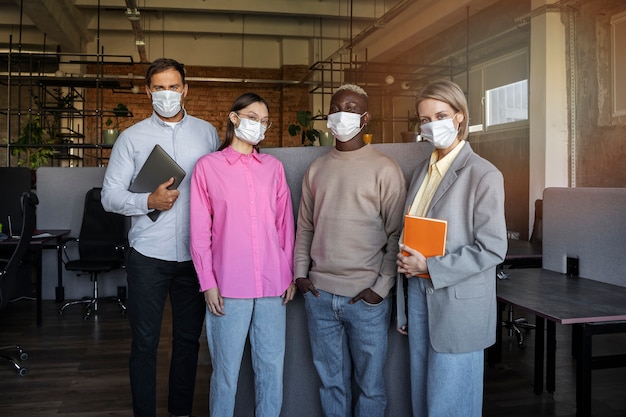The Democratic Republic of the Congo (DRC) is grappling with one of its most complex public health emergencies in recent history. As of September 2025, the country is battling concurrent outbreaks of mpox, cholera, and malaria—three diseases that already place a heavy burden on its fragile health system. Compounding the crisis, the Ministry of Public Health declared the 16th outbreak of Ebola Virus Disease (EVD) on September 4, 2025, following confirmation through polymerase chain reaction (PCR) testing.
This convergence of infectious diseases underscores the vulnerability of health infrastructure in conflict-affected and under-resourced regions. With limited access to clean water, widespread displacement, and ongoing insecurity in eastern provinces, the DRC faces a perfect storm of epidemiological and humanitarian challenges.
The 16th Ebola outbreak in the DRC since the virus was first identified in 1976 is a grim reminder of the country’s persistent struggle with this deadly pathogen. The latest outbreak was confirmed in a remote region where previous EVD incidents have occurred, raising concerns about cross-border transmission and community resistance to health interventions.
Ebola Virus Disease is characterized by severe hemorrhagic fever, with symptoms including high fever, fatigue, muscle pain, vomiting, and internal and external bleeding. The fatality rate can exceed 50% in the absence of timely treatment and supportive care. The 2025 outbreak was detected through enhanced surveillance and rapid diagnostic testing, allowing for early containment efforts.
Health authorities have activated emergency response protocols, including contact tracing, isolation of cases, and deployment of the Ebola vaccine to at-risk populations. However, logistical challenges, community mistrust, and insecurity in conflict zones continue to hinder response effectiveness.

Parallel to the Ebola resurgence, mpox (formerly known as monkeypox) continues to circulate in the DRC. The country has reported the highest number of mpox cases globally in recent years, with the virus spreading primarily through close contact with infected individuals or animals.
Symptoms include fever, swollen lymph nodes, and a characteristic rash that progresses from macules to pustules. While most cases are self-limiting, severe illness can occur in immunocompromised individuals and children. The ongoing transmission highlights gaps in surveillance, public awareness, and access to vaccines, which remain limited despite global stockpiles.
Cholera, a preventable and treatable disease, persists as a major public health threat in the DRC. Caused by ingestion of water or food contaminated with Vibrio cholerae, the disease leads to acute watery diarrhea and dehydration, which can be fatal within hours if untreated.
Outbreaks are frequently linked to poor sanitation, overcrowded living conditions, and displacement due to conflict. In 2025, several provinces have reported spikes in cholera cases, particularly in areas hosting internally displaced persons (IDPs). Oral cholera vaccines (OCV) are being deployed, but supply constraints and access issues limit their impact.

Malaria remains the top cause of illness and death in the DRC, especially among children under five. The country accounts for a significant proportion of global malaria cases and fatalities. With transmission occurring year-round in many regions, seasonal rains and flooding further exacerbate the spread of the disease.
Despite the availability of insecticide-treated bed nets, rapid diagnostic tests, and artemisinin-based combination therapies (ACTs), coverage remains uneven. Health facilities are often understaffed and lack essential supplies, while misinformation and cultural beliefs can delay care-seeking behavior.
The simultaneous outbreaks are not occurring in isolation. Eastern DRC has been plagued by decades of armed conflict, resulting in massive population displacement, destruction of health infrastructure, and restricted humanitarian access. Over 6 million people are internally displaced—the highest number in Africa.
These conditions create fertile ground for disease transmission. Displaced populations often live in overcrowded camps with inadequate water, sanitation, and healthcare. Movement across borders with neighboring countries also increases the risk of cross-border disease spread.
The DRC’s Ministry of Public Health is leading the response with support from the World Health Organization (WHO), Médecins Sans Frontières (MSF), UNICEF, and other partners. Key interventions include:
However, funding shortfalls and operational constraints continue to limit the scale and speed of the response. International donors and global health agencies are being urged to increase support to prevent further escalation.
The current crisis underscores the urgent need for long-term investments in health system strengthening, disease surveillance, and community-based prevention. Building resilient health systems, improving access to clean water and sanitation, and ensuring uninterrupted supply chains for essential medicines are critical steps.
Moreover, integrating outbreak response with broader primary healthcare services can enhance sustainability and community trust. As the DRC navigates this multifaceted health emergency, global solidarity and sustained commitment will be vital to saving lives and preventing future outbreaks.

Health

Health

Health

Health

Health

Fitness

Health

Health